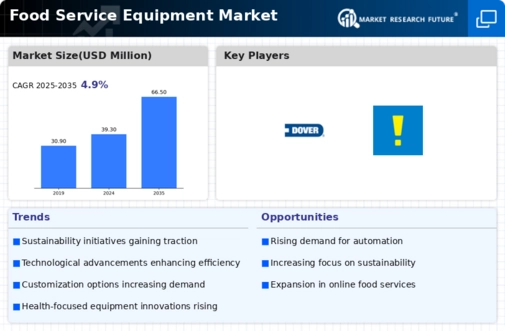Food Service Equipment Market Summary
As per Market Research Future Analysis, the Global Food Service Equipment Market was valued at USD 39260.20 million in 2024 and is projected to reach USD 66589.33 million by 2035, growing at a CAGR of 4.92% from 2025 to 2035. Key drivers include changing food consumption patterns, the rise of takeaways, and the expansion of the hospitality industry. The market is influenced by increasing consumer awareness of energy-efficient appliances and eco-friendly initiatives, leading to a demand for products with the ENERGY STAR symbol. The market is also shaped by technological advancements, including IoT and smart kitchen appliances, enhancing food safety and operational efficiency.
Key Market Trends & Highlights
The Food Service Equipment Market is witnessing significant trends driven by technology and consumer preferences.
- Market Size in 2024: USD 39260.20 million
- Projected Market Size by 2035: USD 66589.33 million
- CAGR from 2025 to 2035: 4.92%
- Full-service restaurants are expected to be the fastest-growing segment during the forecast period.
Market Size & Forecast
| 2024 Market Size | USD 39260.20 million |
| 2035 Market Size | USD 66589.33 million |
| CAGR (2024-2035) | 4.92% |
Major Players
Dover Corporation (US), Meiko (Germany), Duke Manufacturing Co. Inc. (US), Hoshizaki Electric Co. Ltd (Japan), Electrolux AB (Sweden), Manitowoc Company Inc.














Leave a Comment